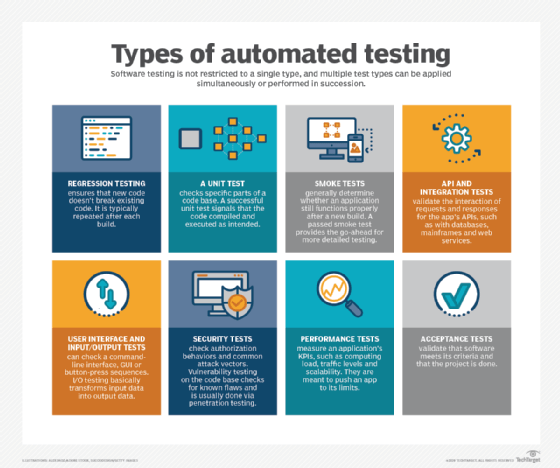From Manual to Automated Testing: A Comprehensive Guide to Transitioning Smoothly and Effectively
In the realm of software program screening, the shift from guidebook to automated processes has actually ended up being an increasingly essential shift for companies seeking to improve efficiency and precision in their testing techniques. The journey from handbook to automated testing is not without its difficulties, but when approached purposefully and with a clear plan in mind, the advantages can be substantial.
Advantages of Automated Testing
Automated testing provides many benefits, boosting performance and precision in software advancement processes. Automated tests can be run at the same time on several gadgets and running systems, dramatically speeding up the screening stage contrasted to hands-on screening.
In addition, automated testing guarantees a greater degree of precision in discovering problems. Consistency in screening is also improved, as automated examinations carry out the exact same actions exactly each time they are run.
Selecting the Right Devices

To start with, analyze your goals and needs. Recognize the range of your job, the modern technologies included, and the ability set of your team. This evaluation will help you establish the attributes and capacities you need in your testing devices.
Second of all, take into consideration the compatibility of the tools with your existing systems and processes. Smooth assimilation with your present software application development lifecycle is important to ensure a smooth change to automation.
In addition, examine the scalability and flexibility of the tools. As your testing requires develop, the tools need to have the ability to adapt and suit modifications efficiently.
Lastly, consider the assistance and community around the tools. Durable assistance and an active customer community can give useful resources and aid when applying automated screening. By thoroughly considering these facets, you can select the right devices that align with your needs and set the stage for a successful shift to automated screening.
Writing Efficient Examination Scripts

When crafting examination scripts, it is necessary to take into consideration the certain requirements of the software program being evaluated and ensure that the scripts resolve all vital functionalities. Clear and detailed calling conventions for examination scripts and examination cases can improve readability and maintainability. Additionally, integrating mistake handling mechanisms within the test manuscripts can help in recognizing and dealing with concerns promptly.
Moreover, arranging test manuscripts right into modular components can enhance reusability and scalability, reducing redundancy and improving performance in test script upkeep. Regular reviews and updates to check manuscripts are important to maintain pace with progressing software program requirements and performances. By adhering to these principles, testers can create durable and effective examination manuscripts that contribute substantially to the success of automated screening procedures.
Integrating Automation Into Workflows
By effortlessly integrating automated screening tools like Selenium or Appium right into the software growth lifecycle, teams can achieve faster feedback on code adjustments, leading to quicker insect detection and resolution. This combination allows for constant screening throughout the development procedure, guaranteeing that any kind of issues are recognized early on, resulting in higher software application top quality. Appropriate assimilation of automation tools needs cooperation between advancement, screening, and operations teams to develop a unified operations that enhances performance and effectiveness in providing top quality software application items.
Ensuring a Smooth Shift
Efficiently transitioning to automated testing includes careful planning and mindful implementation to make the most of and minimize disruptions effectiveness in the software program development procedure - automation testing. To make sure a smooth change, it is important to begin by conducting a detailed analysis of the current testing processes and identifying locations where automation can bring the most considerable benefits. Engaging with all stakeholders at an early stage in the procedure, consisting of designers, testers, and job managers, is essential for gathering assistance and buy-in for the automation campaign
Interaction is key during this shift phase. Clear communication of the goals, advantages, and assumptions of automated screening aids to handle any type of resistance or worries that might arise. In addition, providing adequate training and resources for employee to upskill visit homepage in automation devices and strategies is crucial for making certain an effective shift.

Verdict
In conclusion, transitioning from manual to automated testing uses many advantages, consisting of raised performance and reliability. By selecting the appropriate tools, writing efficient test scripts, and integrating automation perfectly into process, organizations can make sure a effective and smooth change. It is important to welcome automation as a valuable asset in software screening processes to improve overall quality and productivity.
In the world of software program screening, the change from handbook to automated processes has become an increasingly essential change for companies seeking to enhance efficiency and precision in their screening methods. Automated tests can be run at the same time on multiple devices and running systems, drastically speeding up the screening stage compared to manual testing. Uniformity in testing is likewise improved, you can try this out as automated examinations implement the very same steps precisely each time they are run.To ensure the effective application of selected screening tools, the creation of reliable test manuscripts plays an important role in confirming the performance and performance of automated procedures - automation testing. By adhering to these principles, testers can develop durable and effective examination scripts that add substantially over here to the success of automated screening procedures